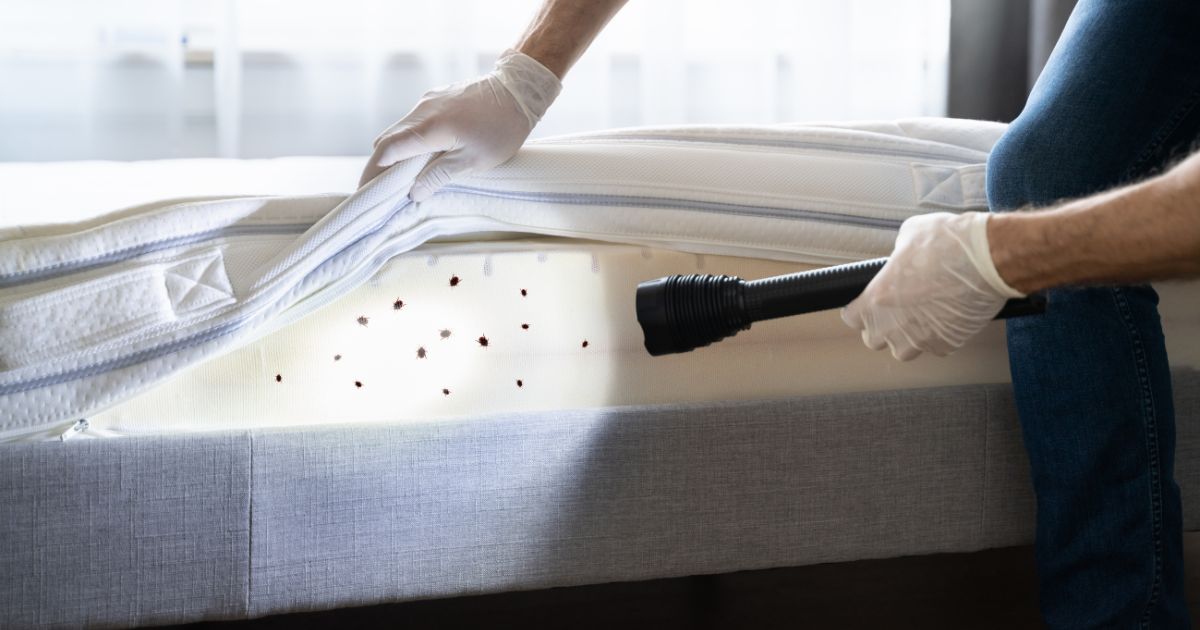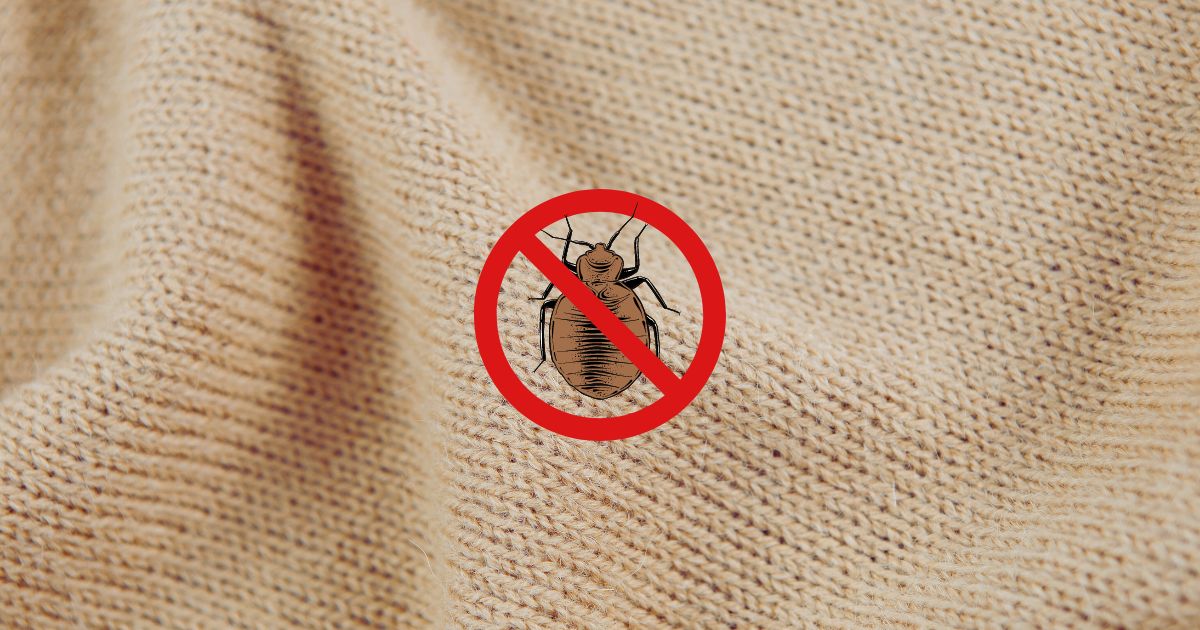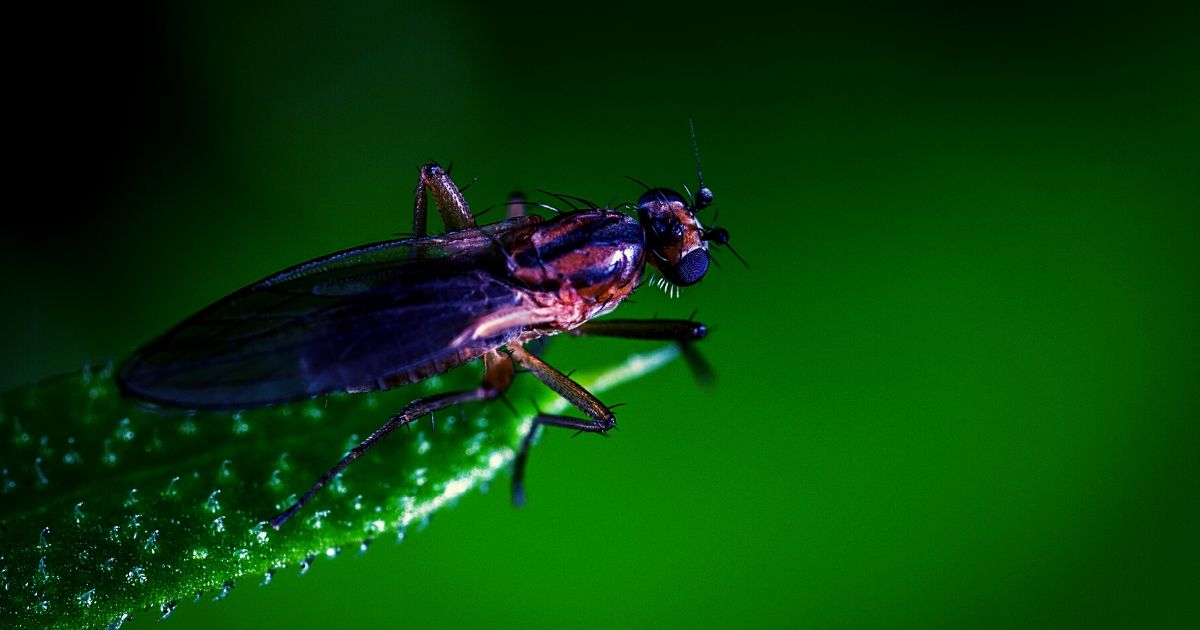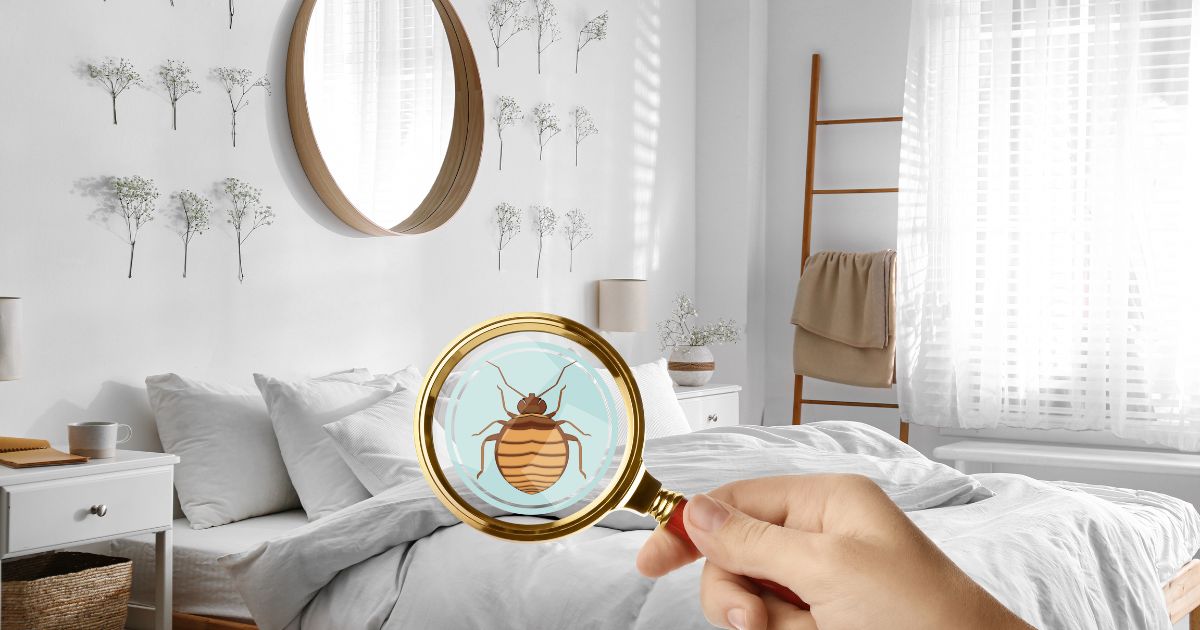The Ultimate Guide to Bed Bugs Prevention and Treatment in Singapore
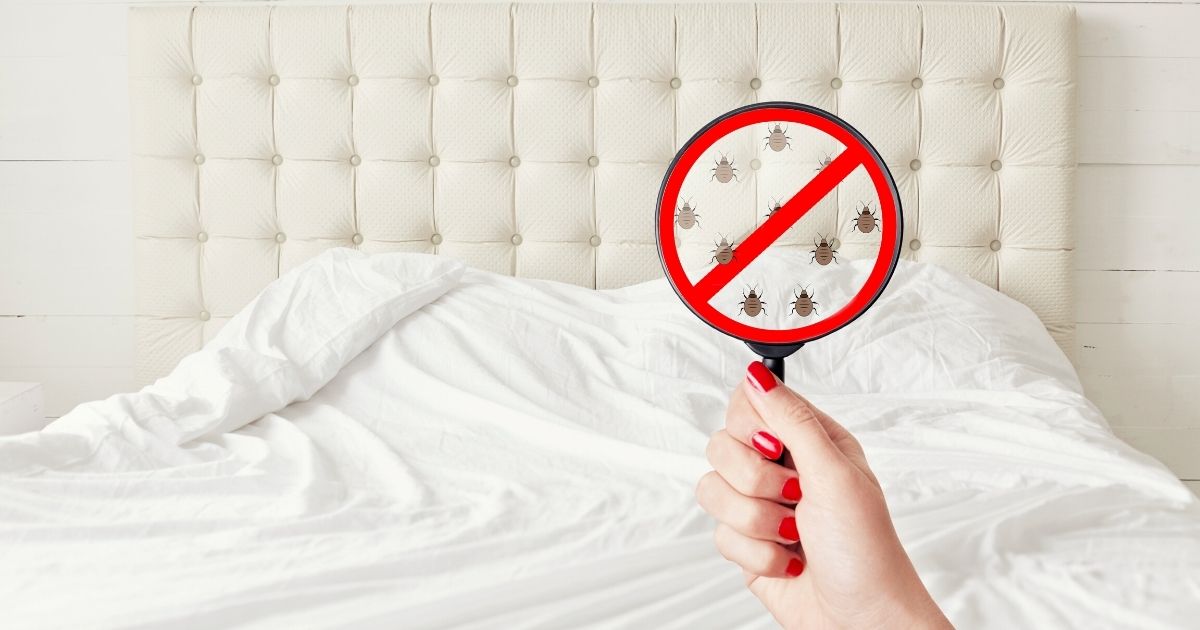
Table Of Contents
- What You Need to Know About Bed Bugs
- Types of Bed Bugs in Singapore
- Life Cycle and Biology
- Hazards
- Signs of a Bed Bug Infestation
- What to Do When You Have a Bed Bug Infestation
- Tips to Prevent and Get Rid of Bed Bugs
- DIY Methods to Prevent and Get Rid of Bed Bugs
- Bed Bug Home Remedies
- How to Get Rid of Bed Bug Bite Marks
- Professional Bed Bug Treatment
Have you been getting unbearably itchy bed bugs bites causing sleepless nights? Or have you been noticing skin rashes that pop up from nowhere when you wake up every morning? If the answer is yes, then you might be facing a bed bug infestation.
You might be wondering what the source of a bed bug infestation is? And where do the bugs come from? The answer may surprise you. In the past, bed bugs have been associated with poor living conditions but their infestations have spread like wildfire in cities around the globe. This phenomenon is contributed by the shift in pesticide usage globalisation. The thriving travel and tourism industry further promotes and increases the rate at which bed bugs are spread all over the world.
Humans bring in bed bug infestations, so we need to take some responsibility. Someone may pick up bed bugs from a hotel room, theatre, a plane or even from public transport. They climb onto your clothes or sneak into your luggage bags. Eventually, the beg bugs find a way into your home.
A bed bug infestation may be a headache to a lot of people. However, with some understanding, you can prevent or get rid of bed bugs infestations.
What You Need to Know About Bed Bugs
Bed bugs are some of the most difficult pests to remove once they have taken hold in your home. Unlike other pests like mosquitoes or rodents, bed bugs do not actually spread disease. However, they are a very big nuisance because bits from bed bugs cause itching, which can lead to excessive scratching and thereby skin infection.
Being bitten by beg bugs at night also causes a loss of sleep.
They can get into the linen on the beds, which is how they got their name. However, you should not be fooled into believing that they only infest beds. They can also get into the carpets, curtains, and even clothing.
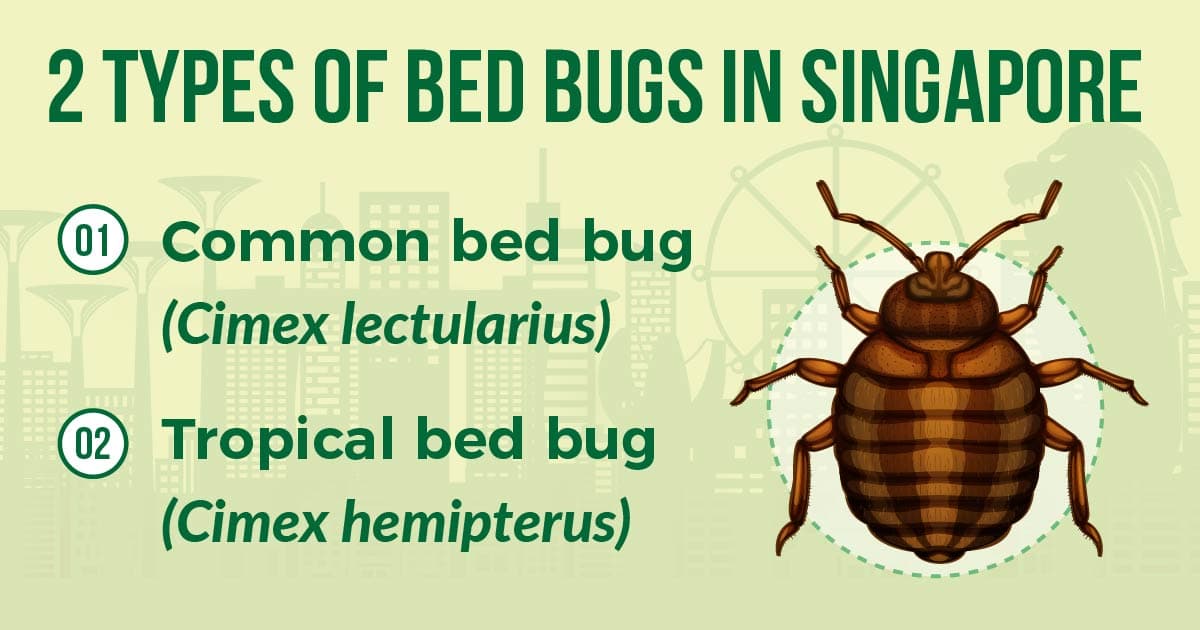
Types of Bed Bugs in Singapore
There are two commonly found species of bed bugs in Singapore:
- Common bed bug (Cimex lectularius)
- Tropical bed bug (Cimex Hemipterus)
Cimex lectularius has a worldwide distribution, especially in temperate regions. Cimex Hemipterus is a common species found in tropical and subtropical areas including Singapore. Both species feed on human blood and are important pests to the travel and hospitality industries.
What Do Bed Bugs Look Like?
- Oval-shaped body
- Reddish-brown colour
Bed bugs have a brownish color before they have fed. After feeding, on the blood of animals and people, they turn a red color. The baby bed bugs are very difficult to see, as they do not have much color to them at all.
These six-legged creatures can reach up to a quarter of an inch long when they are adults.
Life Cycle and Biology
A female bed bug can lay 200 to 250 eggs in her lifetime (one to five eggs each day) and the eggs hatch in 6 to 10 days – this is how they can spread and infest an area so quickly. The life cycle of a bed bug can be completed in as little as three weeks. They will mature in about 21 days, and they can live for several months without feeding.
Bed bug larva undergoes incomplete metamorphosis. It takes five stages before a larva matures into an adult bed bug. A blood meal is needed each time before a nymph moults into the next stage. Bed bugs are opportunistic feeders. They consume as much blood as possible from you until they are fully engorged.
A tropical bed bug can live for up to 100 days while a common bed bug can live for up to 1 year. As much as they need blood meals for growth, bed bugs were found to be able to survive a long period without blood meals.
Have you ever wondered how a tiny bed bug can find its way to you? Bed bugs are attracted to the carbon dioxide and body heat given off by human bodies. A higher concentration of carbon dioxide due to human presence stimulates bed bugs to feed. As they approach the human host, they are attracted by the body heat of the host.

Hazards
Unlike many other pests, bed bugs do not transmit diseases to humans nor cause structural damage to buildings. However, bed bugs feed on human blood. Their presence can still have severe impacts on humans.
1. Allergic reactions
Bed bug bites are not harmful to humans. Some people do not even develop reactions toward the bites. However, people that develop allergic reactions to bed bug bites may have painful swelling or intense itching around the bites. In this scenario, medical attention will be needed to ease the symptoms of allergy.
2. Effect on mental health
Bed bug bites can be extremely itchy to some people. The itch from the bites can cause insomnia and even anxiety in cases of heavy infestations. Bed bugs may cause an affected individual to have sleepless nights, and the lack of sleep can further affect mental health and the ability to carry out normal daily activities.
3. Property damage
Bed bugs do not cause structural damage like termites and rats, but they can cause cosmetic damage to the property. In a heavily infested unit, blood speckles and the droppings of bed bugs can be found all over the unit including the mattresses, bed frames and walls. Owners need to replace the items if the stains are not removable. Also, repainting the walls can be costly.
4. Economic and reputation damage
Bed bugs are a serious threat to the hospitality industry as well as the transport industry. Hotels suffer a loss when the bed bug infestation decreases their capacity to accept guests. The cost to treat bed bug infestations is usually a significant amount that can badly affect a company.
Besides hotel rooms, bed bugs can also be found on planes, buses and trains, causing significant losses to the businesses. A business’s reputation can be badly affected by bed bugs. Numerous lawsuits may also come from bed bug infestations.
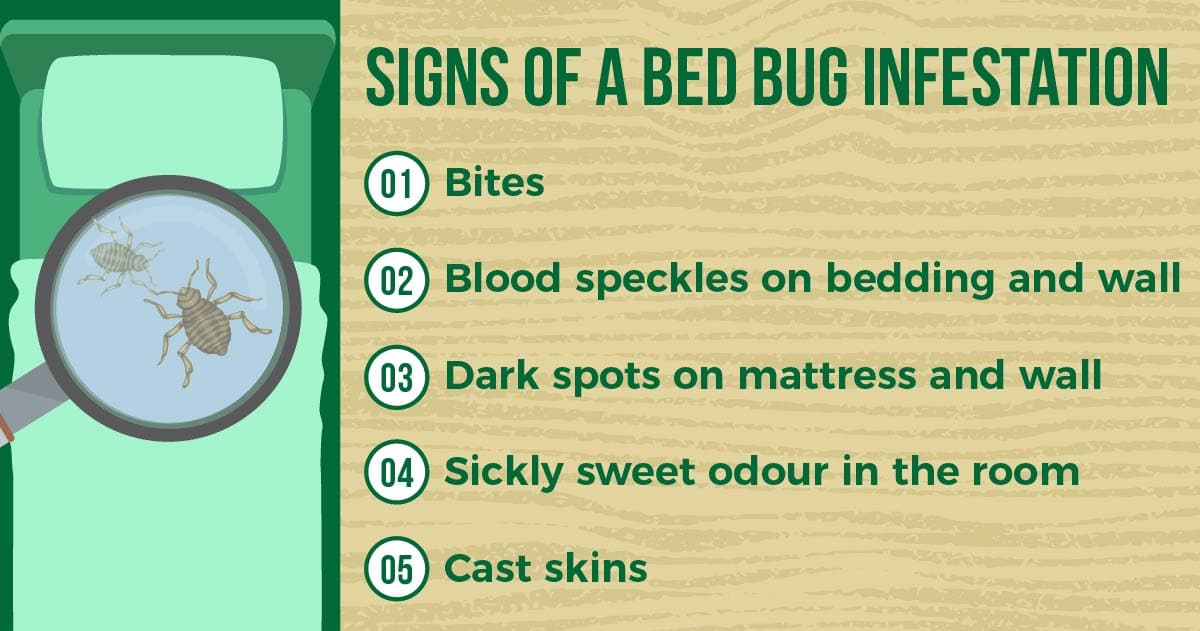
Signs of a Bed Bug Infestation
Here are some signs that tell you that you have a bed bug infestation.
1. Bites
One of the most apparent signs that indicate a bed bug infestation is the presence of bite signs. It might be difficult to differentiate between the bites caused by bed bugs and other insects such as mosquitoes.
A bed bug usually bites more than once, so it is likely to leave numerous bites that cluster around several exposed parts of the body such as the face, neck, arms and legs.
2. Blood speckles on bedding and wall
Bed bugs hide in the corners and edges of a mattress, as well as other locations with cracks and crevices, including the wall. During the night, as bed bugs leave their hiding place to forage, you might accidentally crush them during your sleep. Crushing them causes their bodies to rupture, leaving behind blood stains on the mattress or wall.
3. Dark spots on mattress and wall
The droppings of bed bugs consist of digested blood which resembles black pepper flakes. They are commonly found near the hiding sites of the bed bugs so be sure to check the corners and edges of your mattresses and bed frames if you suspect a bed bug infestation.
4. Sickly sweet odour in the room
In places heavily infested with bed bugs, a pungent smell can be detected. People can have a different perception of how the odour smells. The odour is caused by the pheromones released by the bed bugs. Thus, the odour intensifies as the number of bed bugs present increases.
5. Cast skins of bed bugs
As mentioned earlier, bed bugs need to moult (cast off their skin) to grow. The sighting of cast skins (also known as exoskeletons) indicates the presence of bed bug infestations. The sightings of live bed bugs are also possible.
6. Visible presence of bed bugs
You may even see the adults, even though they typically come out to feed on blood at night. Their presence during daylight hours often indicates a substantial population, as bed bugs usually prefer to remain concealed in darkness when not actively feeding. Therefore, if you spot adult bed bugs during the day you may need to take immediate actions to prevent the infestation from growing further.
Want to find out more about bed bugs removal in Singapore?
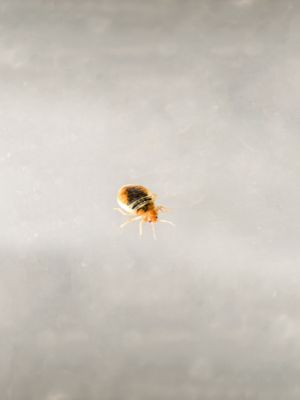
What to Do When You Have a Bed Bug Infestation
Getting rid of bed bugs by yourself can result in many failed attempts. It is extremely difficult to do, and you would be much better served by having professionals in Singapore come in with the right equipment to take care of things.
There are several proven methods that can be used for treating an infestation and getting rid of bed bugs.
Spray and Gas Treatment
A very popular and effective option is to use spray and gas treatment. This utilises dual spraying action, and it makes it possible to cover a large area in a short period. It can eliminate the bed bugs, as well as the eggs they have already laid.
Steaming
Another option is steaming. One of the benefits of this method is that the steaming can occur even if there are people and pets in the home at the time. This makes it a fast and efficient option, and it also happens to be environmentally friendly.
If you have signs of a bed bug infestation, do not wait to get the help you need. Get effective and professional bed bug control from Killem as we can take care of the problem right away.
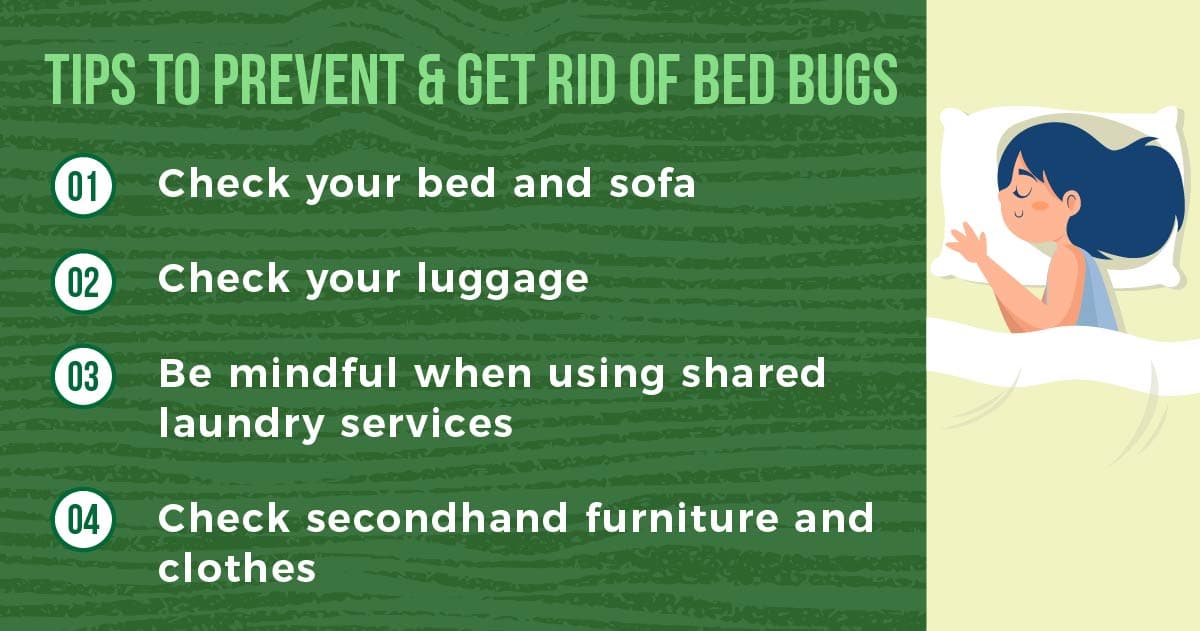
Tips to Prevent and Get Rid of Bed Bugs
Bed bug infestation is a growing concern around the world. If you have them, it is important to know how to get rid of bed bugs. It should be taken seriously as it can cause stress to the victims even though bed bugs do not transmit diseases. Since prevention is better than cure, being mindful in daily life can help to prevent a bed bugs infestation and keep them away from you.
1. Check your bed and sofa
While bed bugs are mostly found around your bed, they can hide around other locations such as the sofa too.
Bed bugs can bite you without you noticing them. They do so when you are sound asleep, or even when you are sitting on the sofa enjoying your favorite movie. Check the gaps between cushions as well as the seams and zippers of the cushion covers to look for signs of bed bug infestation. Bed bugs can also infest the gaps between cushions as well as the frames of beds and sofas.
If you see black spots at the corners and edges of the cushions or mattresses, you probably have bed bugs lurking around you.
Inspecting the beds and sofas helps to detect bed bug infestations. This allows early action before the infestations worsen.
2. Check your luggage
Another major source of bed bug infestation is infested accommodation. As you are enjoying your vacation in resorts or hotels, bed bugs from an infested room may climb into your luggage and follow you back home. Inspect your luggage as you are unpacking them may help you prevent a bed bug infestation.
3. Be mindful when using shared laundry services
Launderettes and shared laundry services are convenient for people living far from home or people who do not do their laundry at home. However, the convenience does come with a risk of exposing yourself to bed bug infestations. Bed bugs may hide in the shared equipment, so do check your washed clothes for signs of bed bugs after using shared laundry services.
4. Check secondhand furniture and clothes
Buying pre-loved items are a great way to save costs and care for the environment. However, sometimes you are getting more than what you wish for as bed bugs may hide in items such as furniture, clothing and even stuffed toys.
Bed bugs can survive without a blood meal for up to 4 months, so they can even be found in items that have been left unattended. Make sure you check the items before you use them again to prevent bed bug infestations at home.
5. Seek Help From a Professional
Professional pest control managers are the best people you can look for to manage the bed bug infestation at your house. Professional pest control operators will conduct effective treatment after careful inspection.
Conventional treatment methods for bed bug infestations include gassing and residual spraying method. Gassing delivers fast knockdown to the bed bugs and residual spraying chemical kills bed bugs that come into contact with the chemical after the treatment. This is important as the eggs of the bed bugs can usually survive the treatment so the residual effect of the chemical kills the newly-hatched bed bugs.
DIY Methods to Prevent and Get Rid of Bed Bugs
Getting rid of bed bugs on your own is not an easy task. However, some methods can reduce their presence or even remove them entirely in cases of light infestations.
1. Wash and dry in high temperature
Bed bugs can be killed when exposed to temperatures higher than 60°C for 15 minutes. Washing or drying your mattress linen and clothes at high temperatures is one of the most effective ways to kill bed bugs. High temperatures have been known to kill bed bugs effectively, therefore steamers that produce high-temperature dry steam are used by professional pest control service providers as a greener and safer approach to eliminate bed bugs.
2. Vacuuming
Vacuuming can remove the adult bed bugs, the nymphs and even the eggs. Focus on the potential hiding spots of bed bugs such as wall joints, cracks and crevices. Thoroughly vacuum the bed, including mattresses and bed frames to remove bed bugs.
Vacuuming together with washing linens at high temperatures may help to eliminate the bed bugs. However, if the situation does not improve, professional pest treatment is required to help solve your problem.
3. Use bedbug-proof encasements for your matresses
Bed bug-proof encasements restrict the movements of bed bugs, thus preventing new infestations as well as trapping existing bed bugs. They are available in the market and work well to keep bed bugs off your bed as long as you install them correctly. With them, you will be able to sleep soundly without having to worry about bed bug bites.
Pro Tip: Don’t panic and don't throw out all of your belongings because most of them can be treated and saved.
Bed Bug Home Remedies
Let’s look at some natural remedies for dealing with bed bugs. A common bed bug home remedy is essential oil bed bug spray. Commonly used oils for creating a natural bed bug killer spray are:
- Peppermint
- Thyme
- Clove
The bed bug home remedy not only effectively eliminates bed bugs, it also provides additional protection to various sensitive spots around your home. This includes bedding, carpets, fabrics of all kinds and any furniture.
To use the bed bug spray, all you need is a spray bottle with distilled water and 10-20 drops of essential oils. Spray it on all prone areas and reapply 2-3 days later. This bed bug home remedy is an effective and natural way to get rid of bed bugs without the use of chemicals.
Other natural products to help get rid of bed bugs include:
- Tea tree oil
- Lavender oil
- Cinnamon
- Powdered Pepper
- Lemon
- Peppermint
- Neem oil

How to Get Rid of Bed Bug Bite Marks
Bed bug bite marks can be an annoying reminder of a bed bug infestation. It is important to resist the urge to scratch when treating bed bug bite marks, as it can lead to secondary infections or prolonged marks.
Some other steps involved in bed bug bite marks treatment and removal include:
- Cleaning the affected area with mild soap and water to prevent any potential infections.
- Using natural remedies like aloe vera or tea tree oil to soothe the skin and reduce inflammation.
- Using creams containing hydrocortisone or antihistamines to reduce itching and help in the healing process.
- For more severe cases, consulting a dermatologist is recommended
Remember, consistent care and patience are key in gradually fading and removing the bed bug marks.

Pest Problem? Let Us Help.
We offer fast and effective precision treatments to eliminate pests while ensuring a safe environment for your home or business.
Professional Bed Bug Treatment
Residual insecticidal treatment is one of the treatment methods to get rid of bed bugs. The chemicals and products used by pest management professionals are different from those that are available over the counter (less effective). The application of residual insecticides targets the areas where bed bugs are most likely to hide and reside, such as:
- Seams of beds
- Folds of sofas
- Wall crevices
Pro tip: Bed bugs are best to be treated before they become much more severe problem.
Killem Pest has employed steaming treatment as an alternative solution for bed bug control.
It is an environmentally friendly solution as it resolves and eliminates bed bugs and their eggs without the use of any insecticide.
The superheated dry steam from the specially designed appliance can be steamed up to 180°C, which directly kills the bed bugs and eggs upon contact. The steam generated will not cause damage to any surface or fabric. Instead, it can help to eradicate viruses, bacteria, germs and fungi on the treated surface.
Bed bug problems should not be underestimated. They are best solved before they become much more severe. In the case of a serious bed bug infestation, treatment methods may vary and can become more challenging. It is vital to identify the root cause of bed bug problems, recognize the source to avoid continuously bringing them back from outside. Lastly, help from a professional pest control company is strongly advised.
Frequently Asked Questions
Bed bugs can come from various infested areas or surfaces, or used furniture. They can often be found in many forms of transportation or any public places and can travel with you from lounge areas, airports or airplanes.
Typically bed bugs hide in mattresses or couches, in the cracks in the bed frame, or near the bed. You can also find bed bugs in other furniture or on the walls (wallpapers, pictures, curtains, window frames, etc).
It is hard to get rid of bed bugs as they hide well and reproduce quickly: their number can grow exponentially in a couple of days.
Bed bugs are visible to the naked eye: adult bed bugs’ colour ranges from red to dark, they are oval in shape and look similar to the apple seed. Immature bed bugs are smaller in size and translucent whitish-yellow in color.
No, bed bugs cannot fly. They don’t have wings, so they can only crawl around. However, they are quite good at crawling and can move quickly over floors, walls, and ceilings to find their next meal.
To spot the presence of bed bugs, check for the bites on your skin, reddish stains or dark spots on bed sheets or mattresses, or the presence of live or dead bugs and their eggs.
Bed bug bites appear on the parts of your skin that are not covered during the night, and look similar to mosquito bites – swollen red spots that often itch.



